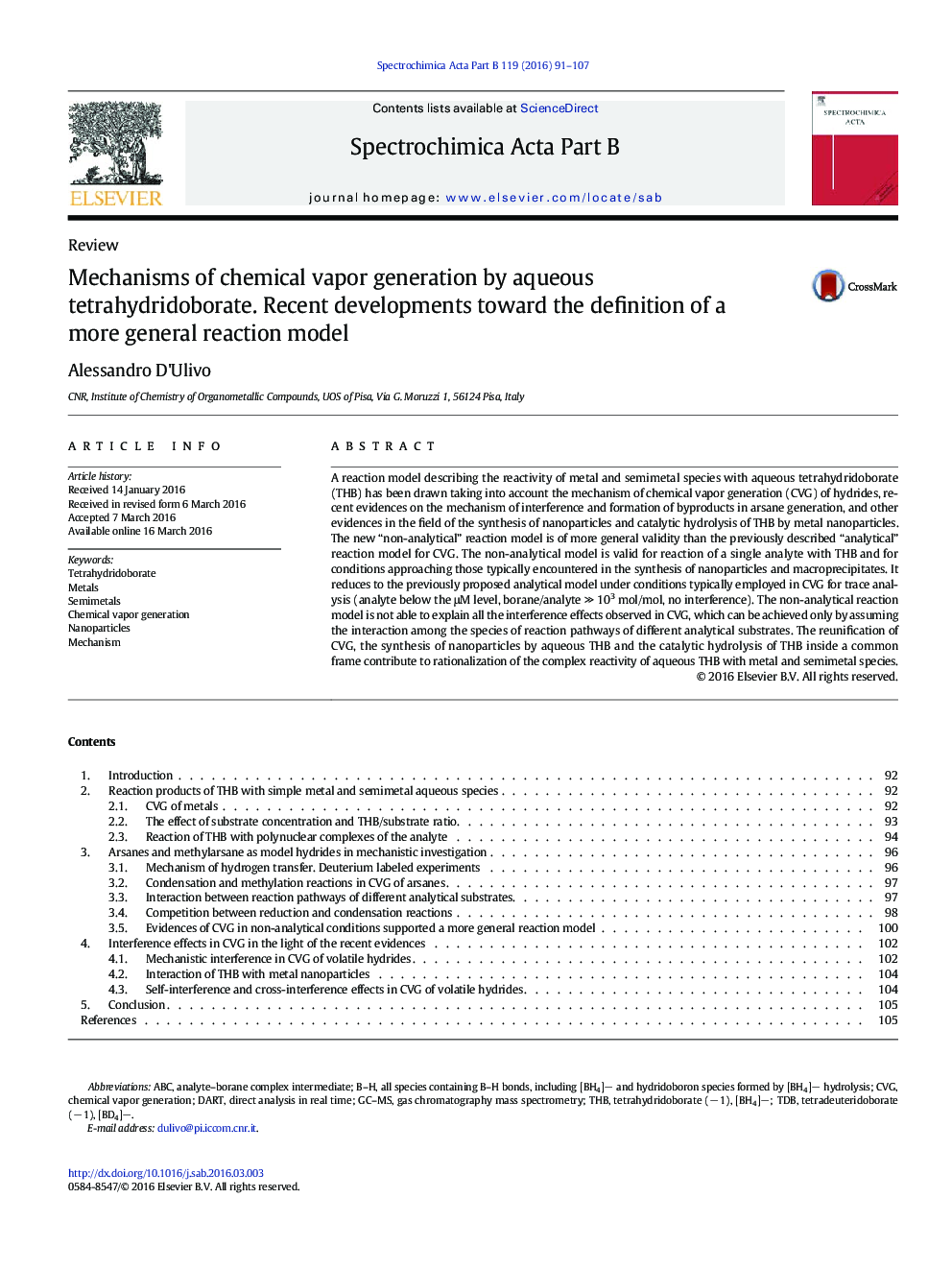| Article ID | Journal | Published Year | Pages | File Type |
|---|---|---|---|---|
| 1239456 | Spectrochimica Acta Part B: Atomic Spectroscopy | 2016 | 17 Pages |
•Recent developments in the mechanisms of CVG by aqueous THB have been reviewed.•A more general reaction model can be described for CVG by aqueous THB.•The model is valid for both analytical CVG and non-analytical reaction conditions.•It includes interferences, nanoparticle formation and catalytic hydrolysis of THB.•THB reactivity with metal and semimetal species is reunified in a single frame.
A reaction model describing the reactivity of metal and semimetal species with aqueous tetrahydridoborate (THB) has been drawn taking into account the mechanism of chemical vapor generation (CVG) of hydrides, recent evidences on the mechanism of interference and formation of byproducts in arsane generation, and other evidences in the field of the synthesis of nanoparticles and catalytic hydrolysis of THB by metal nanoparticles. The new “non-analytical” reaction model is of more general validity than the previously described “analytical” reaction model for CVG. The non-analytical model is valid for reaction of a single analyte with THB and for conditions approaching those typically encountered in the synthesis of nanoparticles and macroprecipitates. It reduces to the previously proposed analytical model under conditions typically employed in CVG for trace analysis (analyte below the μM level, borane/analyte ≫ 103 mol/mol, no interference). The non-analytical reaction model is not able to explain all the interference effects observed in CVG, which can be achieved only by assuming the interaction among the species of reaction pathways of different analytical substrates. The reunification of CVG, the synthesis of nanoparticles by aqueous THB and the catalytic hydrolysis of THB inside a common frame contribute to rationalization of the complex reactivity of aqueous THB with metal and semimetal species.
